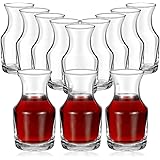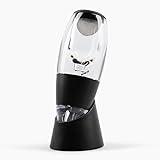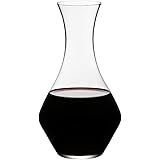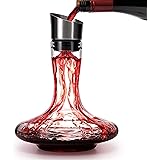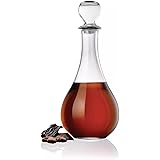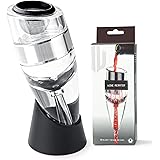Understanding Alcoholic Beverages: Production Methods and Alcohol Content Explained
Have you ever pondered the fascinating diversity within alcoholic beverages, curious about what truly distinguishes a robust whiskey from a crisp gin? The accompanying video effectively lays the foundational knowledge for discerning these differences. However, for those seeking a deeper dive into the intricate world of alcohol production and its varying potencies, this detailed guide offers supplementary insights.
A comprehensive understanding of these spirits begins with their creation methods. Fundamentally, all alcoholic beverages originate from a biological process where simple sugars are transformed into alcohol. This initial stage dictates much about the final product’s characteristics and its eventual alcohol content.
The Foundational Process: Fermentation Explained
The journey of any alcoholic beverage commences with fermentation, a natural process orchestrated by yeast. During this enzymatic reaction, yeast consumes sugars present in various raw materials, consequently converting them into ethanol (alcohol) and carbon dioxide. This chemical transformation is naturally occurring and has been harnessed by humans for millennia to create enjoyable drinks.
Raw materials for fermentation are quite diverse, profoundly influencing the flavor profile of the resulting beverage. Sugars can be sourced from fruits, such as grapes for wine, or from grains like barley for beer. Other plant extracts, including sugarcane or potatoes, may also serve as a base for this vital initial step. The specific sugar source provides the unique building blocks for the alcohol’s character.
Fermented Alcoholic Beverages: Wine and Beer
Fermented alcoholic beverages, which represent the direct result of this sugar-to-alcohol conversion, are typically characterized by a lower alcohol by volume (ABV). Wine, for instance, is traditionally produced from fermented grape juice. The yeast acts upon the natural sugars within the grapes, yielding a beverage with an alcohol content generally ranging from 12% to 15% ABV. Many factors, including grape varietal and fermentation duration, influence this final percentage.
Beer, another prevalent fermented drink, primarily utilizes malted barley as its sugar source. The grains are steeped, germinated, and then dried, a process that converts starches into fermentable sugars. Subsequently, yeast is introduced to metabolize these sugars, resulting in a beer that commonly exhibits an ABV between 4% and 6%. Hops, along with other adjuncts, are often added during brewing to impart bitterness, aroma, and stability.
Elevating Potency: The Art of Distillation
For those seeking alcoholic beverages with a significantly higher alcohol content, a subsequent process known as distillation is employed. Distillation is essentially a method of purification and concentration, separating alcohol from water and other compounds present in a fermented liquid. This technique allows for the creation of potent spirits that would be unattainable through fermentation alone.
During distillation, the fermented beverage is carefully heated to a specific temperature. Ethanol possesses a lower boiling point (approximately 78°C) than water (100°C). Consequently, when the mixture is heated, alcohol vaporizes more readily than water. These alcohol vapors are then collected and cooled, causing them to condense back into a liquid form. This purified, concentrated liquid is what is referred to as a distilled spirit or liquor, often containing a much higher ABV than its fermented precursor.
Categories of Distilled Spirits Based on Base Ingredients
The type of distilled spirit produced is largely determined by the initial fermented base product. Each base ingredient imparts its own unique characteristics and flavor compounds, which are then concentrated and refined through the distillation process. General distilled spirits typically range from 40% to 60% ABV, offering considerable strength.
Rum: From Sugarcane’s Sweetness
Rum is a versatile distilled spirit meticulously crafted from sugarcane byproducts, most notably molasses or, less commonly, directly from sugarcane juice. The sugary base is first fermented by yeast, and the resulting liquid is then distilled. This process concentrates the unique tropical notes derived from the sugarcane, leading to a spirit that can range from light and sweet to dark and intensely flavored. Aging in oak barrels is often utilized to further develop its complexity and smoothness.
Brandy: The Essence of Fruit
Brandy is a distinguished distilled spirit primarily produced from fermented fruit juice. While grape wine is the most common base, brandies can also be made from other fruits, such as apples (resulting in applejack or Calvados) or cherries (kirsch). The distillation of wine concentrates the grape’s aromatic compounds, yielding a rich, often amber-colored spirit that is frequently aged in wooden casks. If made from fruits other than grapes, the spirit is typically named after its specific fruit origin.
Whiskey: The Grain Tradition
Whiskey represents a broad category of distilled spirits made from a fermented mash of grains. Common grains utilized include barley, corn, rye, and wheat, often in various combinations. After fermentation and distillation, whiskey is almost universally aged in wooden casks, frequently made from charred oak. This aging period imparts distinctive flavors, colors, and aromas. Different types of whiskey, such as Scotch, Bourbon, and Irish whiskey, are defined by their grain composition, production location, and aging requirements.
Vodka: The Neutral Spirit
Vodka is widely recognized as a neutral spirit, traditionally distilled from fermented grains or potatoes. The goal of vodka production is often to achieve a very clean and pure alcohol flavor, with minimal discernible characteristics from the base ingredient. Modern vodka production has expanded to include a variety of other starch-rich plants, including corn, rice, and even some fruits or sugar. Multiple distillations and extensive filtration are often employed to achieve its characteristic purity and smoothness.
Gin: The Botanical Infusion
Gin is a unique distilled spirit primarily made from grains, most commonly wheat or barley. What truly sets gin apart is its distinctive flavor derived from botanicals, which are added during a redistillation process. The most essential botanical for gin is the juniper berry, which imparts its signature piney, resinous flavor. Other botanicals, such as coriander, citrus peel, angelica root, and various spices, are carefully selected to create a complex and aromatic profile. The botanicals are often steeped in the spirit or passed through as vapor, infusing the alcohol with their essence.
Tequila: The Agave Spirit
Tequila is a regionally protected distilled spirit produced exclusively from the blue agave plant, primarily within the vicinity of Tequila, Mexico, and specific regions of Jalisco. The heart of the agave plant, known as the piña, is harvested, cooked to convert starches into fermentable sugars, and then fermented and distilled. Tequila’s unique earthy and often peppery flavor profile is directly attributable to the blue agave. It is often enjoyed neat, in shots, or as a key ingredient in numerous cocktails, most notably the Margarita.
Liqueurs: Sweet and Flavored Spirits
Beyond these primary categories of spirits, another class of alcoholic beverages exists: liqueurs. Liqueurs are created by combining distilled spirits with various flavorings, which can include fruits, herbs, spices, and significant amounts of sugar. This process yields a sweetened, often less potent, and highly aromatic beverage designed for sipping, mixing in cocktails, or as a dessert accompaniment. The flavoring ingredients are infused or macerated into the base spirit, and sweetening agents are then added to achieve the desired balance.
Measuring Potency: Alcohol by Volume (ABV)
When assessing the strength of any alcoholic beverage, the most reliable indicator is its Alcohol by Volume (ABV). This metric, typically displayed on beverage labels, represents the percentage of pure alcohol contained within the total volume of the liquid. For instance, a drink labeled “40% ABV” signifies that 40% of its total volume consists of pure ethanol. Consequently, higher ABV numbers correlate directly with greater alcoholic potency.
As previously noted, fermented drinks like beer and wine typically possess a lower ABV, generally ranging from 4% to 15%. Distilled spirits, conversely, often fall within the 40% to 60% ABV range due to the concentration achieved through distillation. However, some specialized spirits undergo additional distillation passes or are bottled at cask strength, resulting in even higher alcohol percentages.
Among the strongest alcoholic beverages globally, Spirytus is recognized for its remarkable 96% ABV, making it exceptionally potent. Similarly, Everclear is another highly concentrated spirit, frequently found with an ABV of 95%. These exceptionally high-proof alcoholic beverages are primarily intended for dilution or as ingredients in complex mixtures rather than for consumption in their undiluted form. It is always important to remember the significance of responsible consumption when enjoying any alcoholic beverages.


